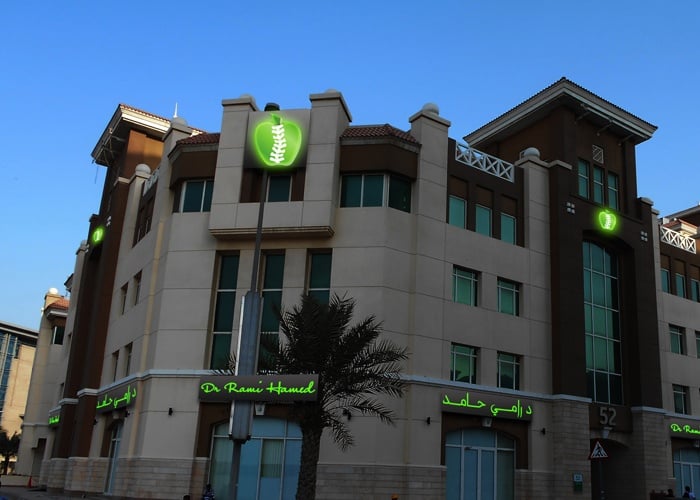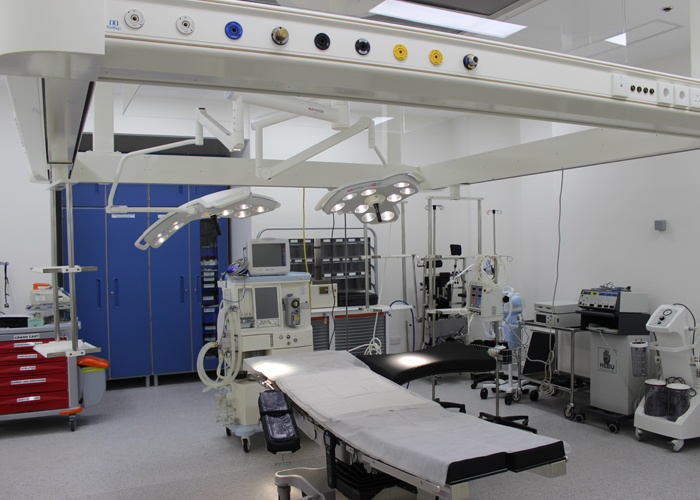Hypertrophic Cardiomyopathy -
Dubai Cardiology Clinic
There is increase thickness of heart wall especially in septum between the two ventricles which result in decrease proper filling and pumping the blood from the main chamber (left ventricle) effectively. It is affecting the young people and cause a lot of sudden cardiac death in athletes. So now it is necessary to do routine cardiology checkup for all athletes.
Causes:
It is inherited in most case from parents,other causes include Fabry disease and Friedreich’s ataxia.
Symptoms and signs:
The clinical course of HCM is variable, many people with HCM are asymptomatic or mildly symptomatic.
Manifestation include:
- Shortness of breath due to decease ventricular filling
- Exertional chest pain (angina) due to decrease blood flow to coronary arteries
- Palpitations
- Lightheadedness
- Weakness, fainting
- Sudden cardiac death due to VT or VF occur 1% a year.

Major risk for sudden cardiac death in patient with HCM:
- Prior history of cardiac arrest or VT,
- Spontaneous sustained VT,
- Family history of premature sudden death, unexpected syncope,
- Left ventricular thickness 30 mm or more
- Abnormal exercise blood pressure and non-sustained VT.
Diagnosis:
1 - Auscultation systolic murmur in the apex from mitral valve leakage or flow murmur in aortic area.
2 - ECG changes
3 - Echocardiography which is diagnostic in 80% of cases which shows the very thick septum and functional mitral regurgitation, but in children under 13 years of age the thick septum may be absent so the MRI could catch the diagnosis.
4 - Cardiac magnetic resonance imaging (CMRI) is very sensitive for diagnosis.
Obstructive and non-obstructive HCM
- Hypertrophic obstructive cardiomyopathy (HOCM) it is called idiopathic hypertrophic subaortic stenoses (IHSS) it causes obstruction of the outflow of blood from the left ventricle of the heart.
- Non obstructive HCM or apical hypertrophic CM or Yamaguchi syndrome first described in Japan.
Treatment
- Asymptomatic we advise those people to avoid particular strenuous activities or competitive athletics.
- Symptomatic patients: two option of management either medical or septal myectomy.
I - Medications: we start medical treatment to relieve symptoms of palpitations shortness of breath, chest pain, by prescribing:
- Beta blocker (bisololol - metoprolol - atenolol) if the patient could not tolerate them due to asthma or allergic bronchitis, we move to
- Verapamil which is the second choice but we have to be carful and keep an eye on blood pressure it may cause severe hypotension in those people, if we failed, we move to
- Disopyramide to control rhythm and relieve symptoms .
II – Septal myectomy either:
Surgical by open-heart operation to remove a part of septum and open the outflow of LV, or
Alcohol septal ablation by injection of pure alcohol into one or more of septal branches of left anterior descending artery(LAD), septal ablation induces a controlled heart attack in which part of interventricular septum is infarcted and leave scar.
It is necessary to screen the family member when you face patient with hypertrophic cardiomyopathy to protect them from catastrophic events.




.png?width=1080&height=1080&name=DR.%20M.ADIB%20NANAA%20(1).png)




